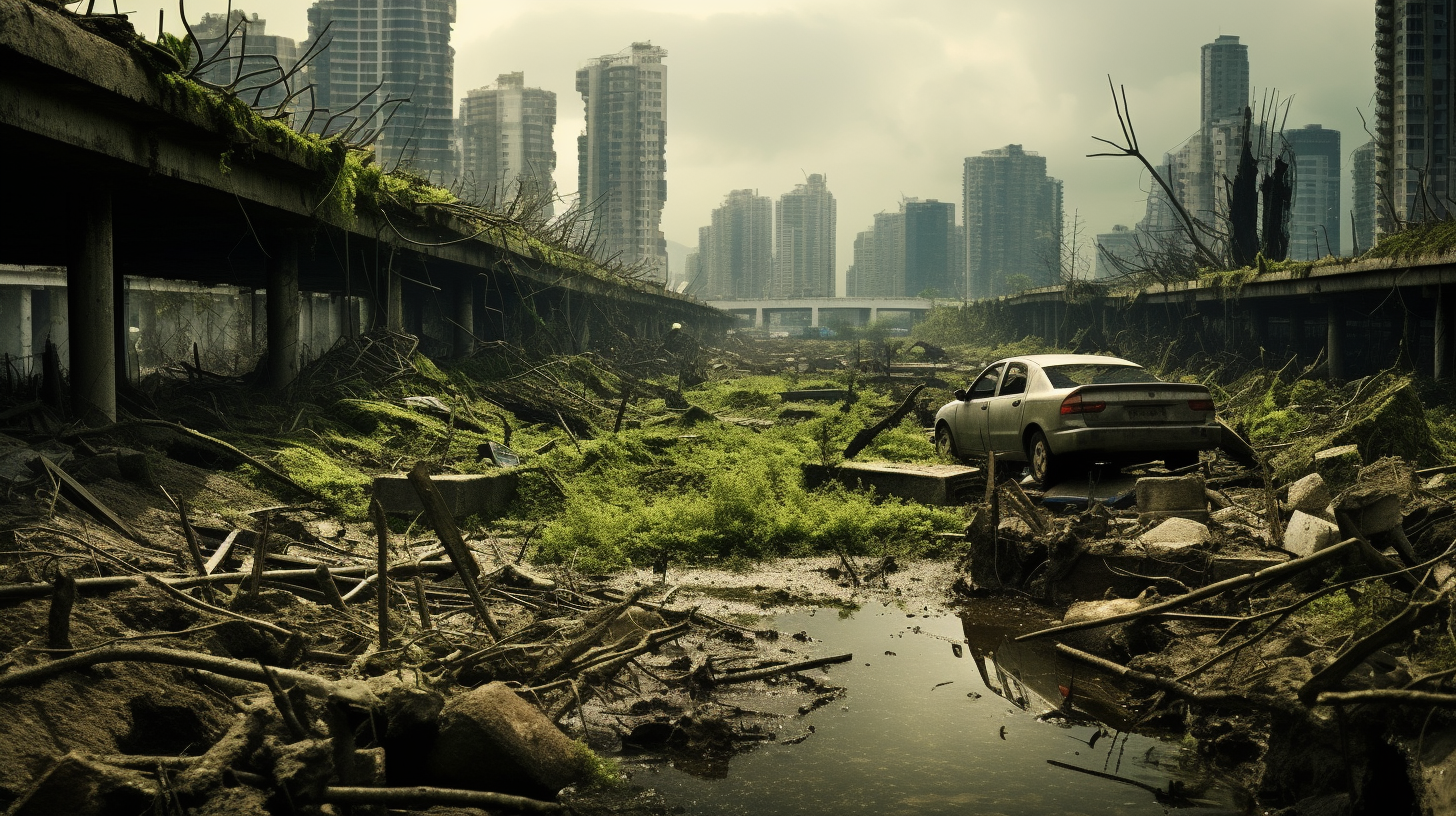In an era marked by the ravages of climate belligerence, the relics of our once-celebrated urban edifices groan beneath a relentless siege of foliage and fauna. From the crevices of derelict avenues to the skeletal remains of skyscrapers, a new wilderness emerges — untamed, unyielding, reclaiming what was once usurped by steel and concrete.
The symphony of civilization’s cacophony now replaced by the feral chorus of nature’s resurgence — the roar of the lion where subway trains once screeched, the cawing of ravens echoing in the hollows of deserted high-rises. With the loss of human sovereignty comes the return of the royals of the wild, their reign unfurling in the heart of reformed urban jungles.
As our monuments to modernity crumble, ivies adorn their facades like triumphant banners. It’s a sight beheld in major cities across the planet: Beijing’s Bird’s Nest Stadium nests not athletes but actual avian dwellers; London’s Shard, now a pinnacle piercing a canopy of lush green, where peregrine falcons dance and dive amidst the whispering leaves; Manhattan’s renowned crosswalks now cross paths with the scuttle of creature not machine.
‘Nature is not just surviving; it’s thriving, bustling in the post-human epoch’), declares Dr. Aileen Reed, an ecologist studying the rewilding of urban settings. This rapid transformation is not without dire implications. The collapse of our constructed havens has given rise to a Darwinian shake-up — only the adaptable prosper in this new world order.
In the labyrinth of what was once Paris, a primal saga unfolds as carnivorous plants weave through the metro, making prey of the rats that once ruled the underbelly of the city. Edible vegetation nestles in the alcoves of infrastructure, providing sustenance for those few humans who dare assert their presence among the beasts and green.
Cherry trees burst into bloom amidst Tokyo’s Shibuya Crossing, their blossoms falling like nature’s solemn confetti over abandoned technological marvels. Amid the husks of public transport vehicles, the echoes of an ancient sylvan life pulse ever stronger, a rhythm synchronous with the planet’s heaving sigh of relief from the chokehold of human industry.
Some remnants of anthropogenic marvels refuse to vanish silently into the verdant shroud. Solar panels, decayed as they are, flicker to life with each sunrise, relics of our age’s ingenuity — perhaps a wink at our attempt at harmony with nature’s dominion. Yet their electrical whispers barely ripple through the overgrowth, suffocated by the potent embrace of what we once deemed wilderness.
Allow this portrait to stand, not as a beacon of despair, but as a majestic tapestry illustrating the undying, unbowed thrum of life that courses through our planet. It serves as a stark tableau, a reminder of what happens when the sentinels of progress are left to time’s indomitable tide, and how in the shadows of humanity’s hubris, life endures, robust and merciless in its majesty.
And so, as the tendrils of Earth’s unrestrained children wind through the wreckage of our era, they weave the ultimate eulogy — not of Earth, which persists beyond our fleeting epoch — but of human legacy, swaddled now in the creeping embrace of a resolute Mother Nature.
